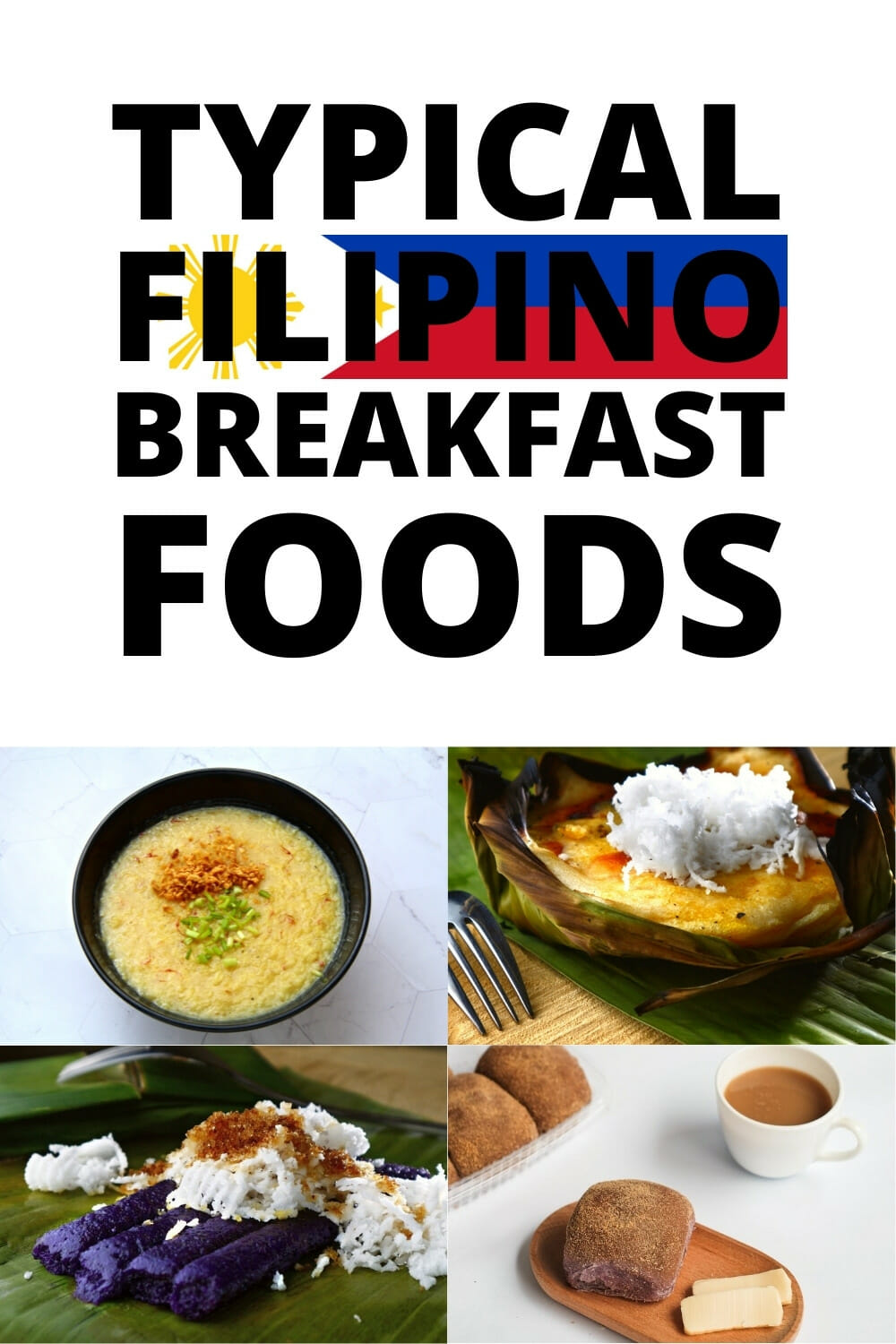Morning in the Philippines smells like breakfast. When you're in the Philippines, you're always surrounded by culinary goodness. Food stalls, canteens, and restaurants all over the country are already bustling by 6 am and are ready to satisfy every palate.
The traditional Pinoy breakfast served at these eateries awakens the taste buds of students, workers, and anyone who finds themselves looking for street food. Of course, many families prepare food at home and whether they prefer a healthy breakfast or food that fuels an army, there are choices for everyone.
Filipino breakfast food is a melting pot of Asian and a few Western influences. While there are many different types of breakfast dishes in the Philippines, rice as a base is a common staple. It's easy to find a delicious dish that will satisfy your early cravings while providing both robust and delicate flavors – from mild savory to salty and sweet.
Lugaw
One of the most popular Filipino dishes is lugaw, also known as glutinous rice porridge or congee. Known as comfort food, lugaw is a mildly savory dish. As it is easily digestible and contains plenty of water from the simmered rice, it makes the perfect food for when you're a little under the weather.
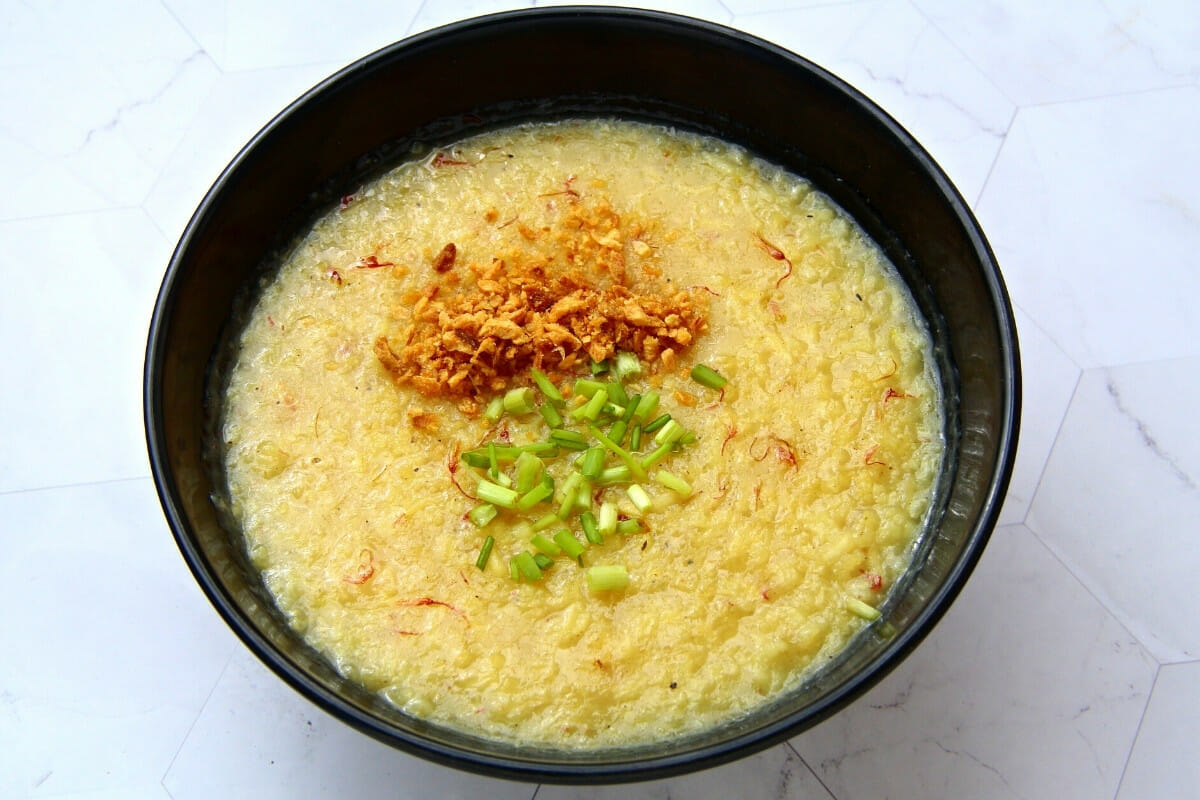
Fish sauce, calamansi, pepper, and fish sauce are simple additions that help customize the dish. You can add saltiness with fish sauce, a tangy tang from calamansi, or all at once for a fusion.
At roadside eateries or karinderya like Lugawan sa Tejeros in Makati, pairing this popular breakfast dish with a hard-boiled egg and a classic tokwa’t baboy (a fried tofu and boiled pork combination often dipped in a vinegar and soy sauce mixture) is a must.
Under the umbrella term lugaw, there are also the goto and arroz caldo variants. Goto contains beef tripe and innards, while arroz caldo contains chicken. Both of these types of congee are savory with chewy ingredients topping a soft textured base.
Tuyo
Even the spiciest, most pungent food can taste incredible if it's decently seasoned and prepared correctly – tuyo is proof of this. This sun-dried and fried herring dish serves as a viand (Filipino term for a meat dish that accompanies rice), balancing the softness and blandness of plain cooked rice with crispy and salty qualities.
Spicy vinegar or fish sauce with sliced tomatoes are good complements for tuyo; the latter enhancing its briny flavor.
In the Philippines, tuyo is inexpensive and readily available in wet markets around the country. As a result, it has become a staple in Filipino households, prepared not only for breakfast, but also for other meals throughout the day.
The traditional way of eating tuyo with rice is by hand without any use of cutlery. That’s how Filipinos do it. And this makes it easier to remove scales and small bones, a difficult task with utensils. Also, eating it this way is more enjoyable, especially during kamayan or boodle fights when food is served on banana leaves.
Champorado
Did anyone say breakfast? Or dessert? Or both? Champorado is a sticky dish that falls under the lugaw group. It is a sweet chocolate rice porridge made with tablea or cacao beans and sticky rice, drizzled with evaporated or coconut milk, and granulated sugar to taste.
Champorado is often paired with tuyo, but this unusual combination allows both dishes’ respective flavors to dance on your tastebuds in harmony. You can try this dish at Angel’s Kitchen in San Juan, which serves its own tasty version of chocolate rice porridge with a generous amount of tablea, perfect for those who enjoy dark chocolate.
Whether or not you pair your champorado with tuyo, this dish is perfect for cold or rainy mornings when you want your breakfast to double as a dessert. This is an ideal breakfast alternative for those with a sweet tooth, especially kids.
This congee is definitely a trip down memory lane for Filipinos. If you like the taste of tablea and want even more morning sweetness, add a side of chocolate turon (but don't tell anyone)!
Silog
On the breakfast menu of nearly any local canteen serving cheap meals to students, “silog” will appear several times. The name of this dish is a catchy portmanteau of the words “sinangag” which is stir-fried garlic rice, and “itlog” which is egg, specifically a fried sunny-side-up egg for this dish.
Silog is basically an addition to several types of meat you can pair it with. Here are a few examples:
- tapa or cured beef jerky for tapsilog
- longganisa or Filipino-style sausages for longsilog
- corned beef for cornsilog
- hotdogs for hotsilog.
- bacsilog, a bacon silog curated for those who miss western breakfast, is also available.
There's no doubt that tapsilog is the most popular silog. Tapsi ni Vivian restaurant in Quezon City serves a good version of this dish. The owner, Vivian, even coined the term tapsilog in the 1980s. On top of being a breakfast meal, tapsilog is also a late-night hangover food and a budget-friendly lunch. A popular side dish to any version of this substantial meal would be atchara, pickled green papaya with a sweet and sour taste.
Taho
Filipinos love taho as an early morning snack, even though it's not exactly a breakfast dish. Taho is a soft dessert made of silken tofu, garnished with gummy and roe-like sago pearls, and generously sweetened with brown sugar syrup.
Every morning throughout the country, taho peddlers or magtataho balance a wooden pole with two taho-filled aluminum buckets on their shoulders as they shout “taho!“ on residential sidewalks.
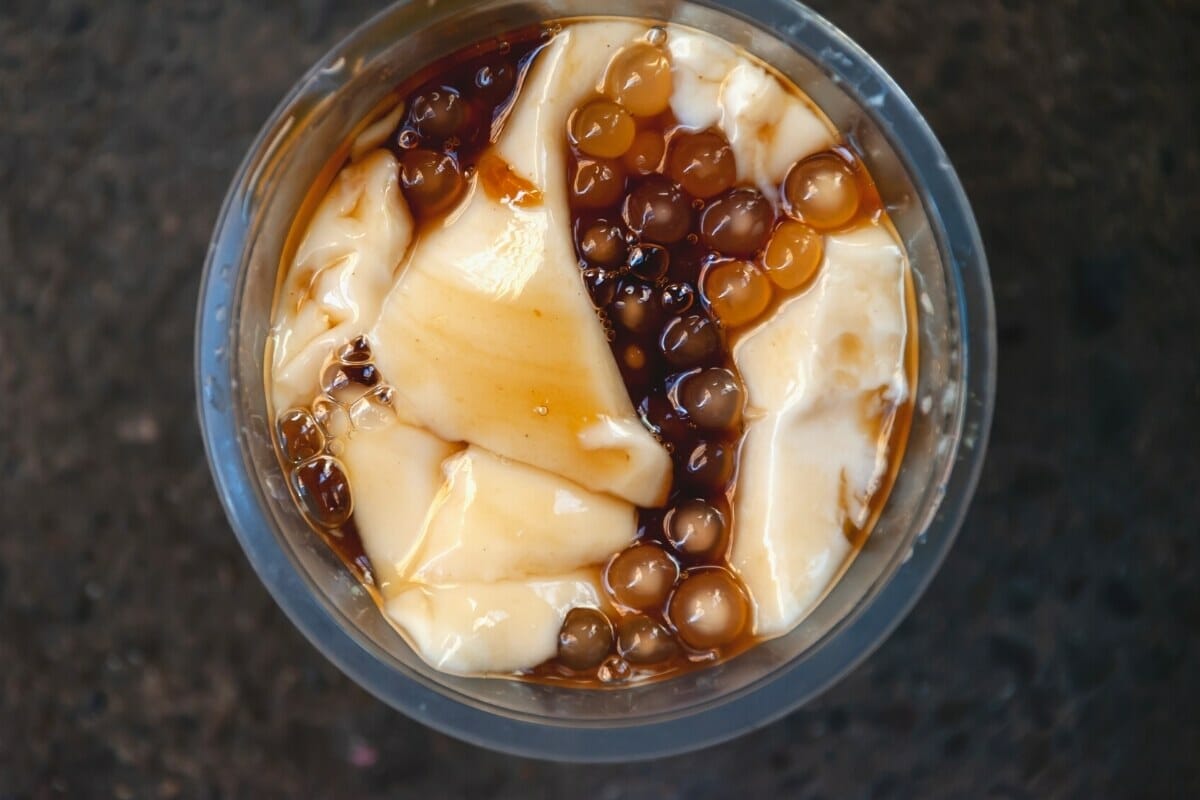
Street-side traditional taho is usually served warm and soft. Store-bought versions are typically firm and cold, so you'll have to break them first like a pudding. The city of Baguio is known for its signature taho flavors, such as strawberry (sweetened with syrup) and ube taho, flavored and colored with ube purple yam.
Tortang Talong
Tortang talong (eggplant omelet) is made with grilled and peeled Chinese eggplants and a seasoned egg mixture. This dish has a smoky aroma and a savory taste best partnered with rice and sweet banana ketchup. The eggplant gives a soft and tender texture underneath a crispy pan-fried egg topping.
There are a couple of versions of tortang talong to note. For example, some Filipinos add ground pork to increase the umami factor. But the budget option is the original, simple recipe.
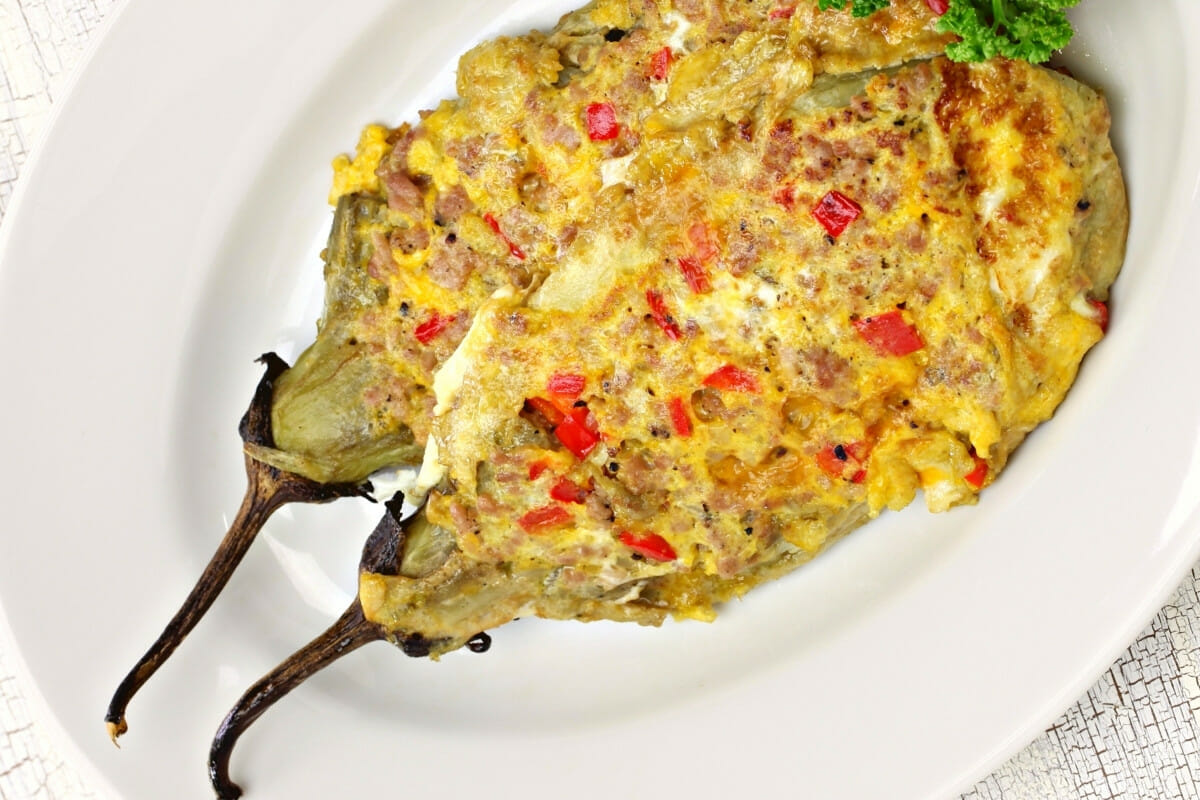
The simple seasoning helps to remove the bitter taste of eggplant. Children who normally refuse to eat bitter vegetables generally enjoy tortang talong, even for breakfast. The large protruding stalk and the edible sesame-like seeds give away the fact that this is a vegetable dish. This low-calorie dish, which is rich in fiber and antioxidants like Vitamin C and B6, is a great choice if you want dietary benefits along with the taste.
Start your day healthy with eggplants.
Puto Bumbong
In the Philippines, ube or purple yam is the most recognizable purple ingredient. But puto bumbong, served on a banana leaf, is a dish that brings purple to the breakfast table. This rice cake or puto is made with glutinous rice steamed in bamboo tubes ( bumbong), giving it a cylindrical shape.
The dish’s signature purple color comes from pirurutong, a variety of black rice known for its deep purple color. However, pirurutong is harder to source these days, so artificial purple food coloring or ube itself is used to maintain the traditional appearance.
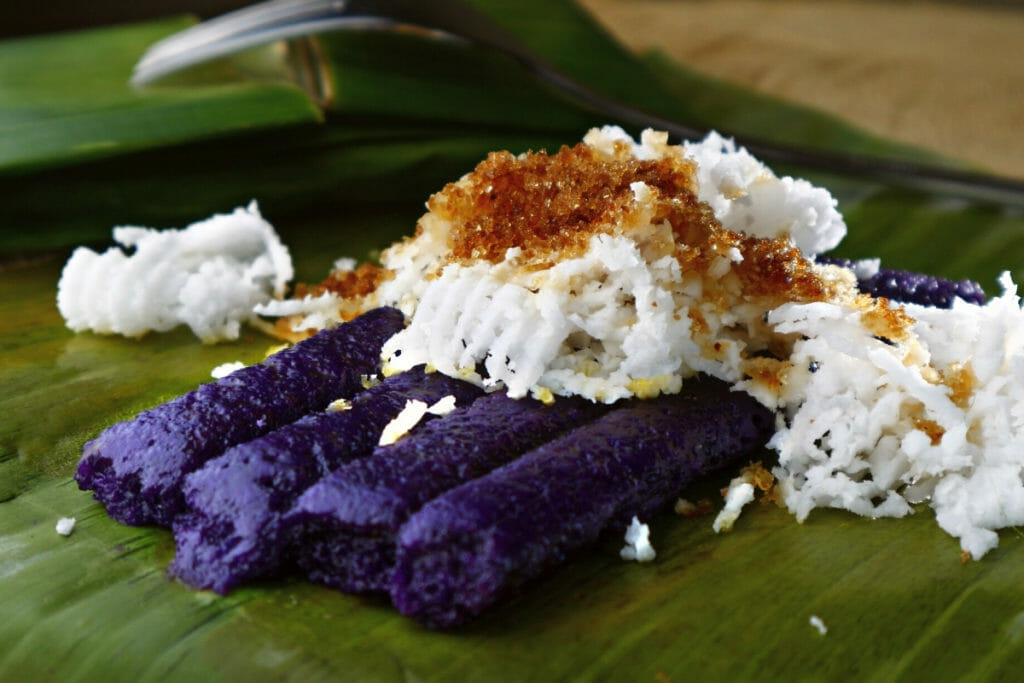
Basic puto bumbong has a soft, sticky, and chewy texture but a rather bland taste. So it is brushed with melted butter and topped with grated coconut and muscovado sugar to enhance the flavor. Cheese has also become an optional topping for modern versions of this dessert.
Puto bumbong is widely served near churches during the Christmas season, which begins as early as September in the Philippines. Many people eat it for breakfast thanks to the tradition of eating the dish after a religious service called simbang gabi, which starts between 3 and 5 am and goes on for nine days during the Christmas period.
Bibingka
A Filipino Christmas isn’t complete without a heavy serving of bibingka. Like puto bumbong, bibingka is a popular breakfast-type dessert served on a banana leaf, often directly after dawn masses. The dish consists of a yellow rice cake filled with slices of salted duck egg and cheese, slowly baked in clay ovens using charcoal heat.
Bibingka’s texture is soft yet firmer than a regular cake, and it tastes mildly sweet thanks to the coconut milk. The salty fillings balance the overall flavor. Charring on the top and bottom, including the banana leaf, produces a unique sweet aroma with a hint of smoke. Bibingka is also often topped with dried shredded coconut, similar to puto bumbong.
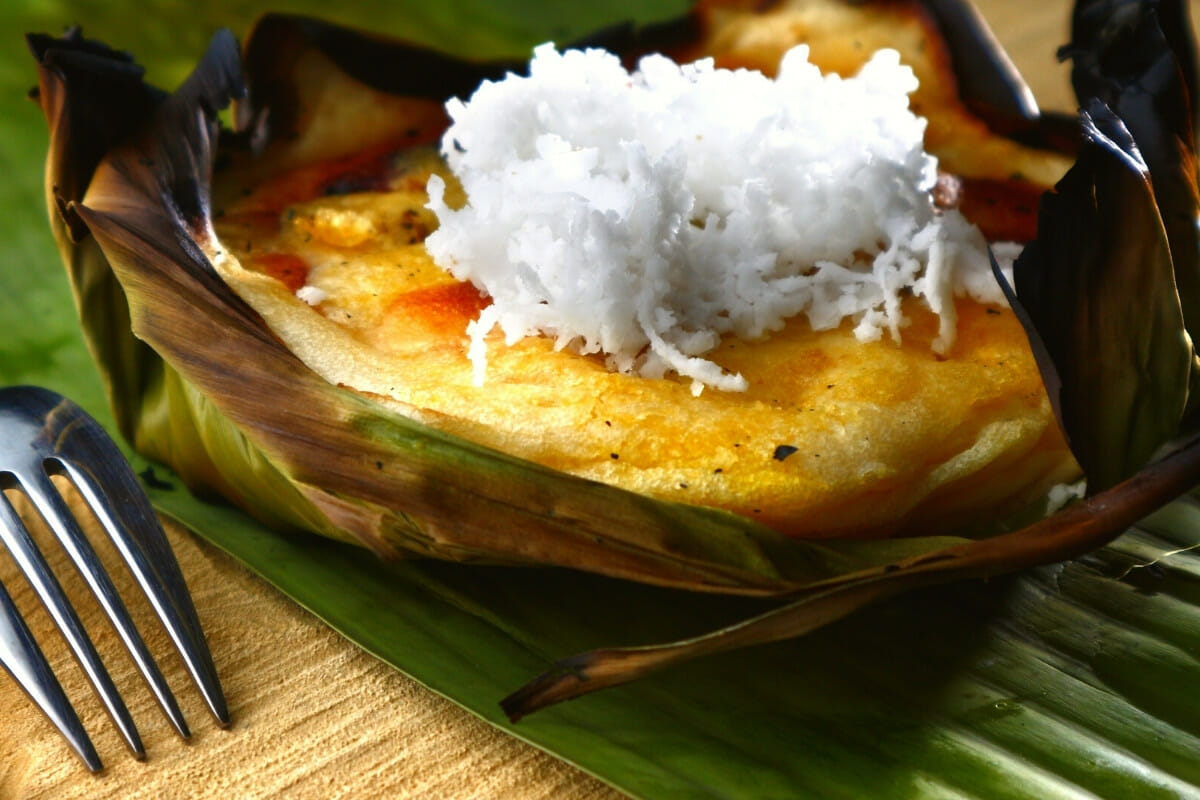
The regular-sized bibingka is more than enough for an average eater, so sharing this sweet rice cake has become a tradition during the holidays. The dish is even embedded in the Filipino music scene with the song “Bibingka” by local folk-pop band Ben&Ben.
If you want to make your Christmas in the Philippines memorable, eat bibingka paired with salabat or ginger tea with your family, friends, or a special someone!
Kape and Pandesal
The United Kingdom has the iconic tea and biscuits duo. And the Philippines has its own version, kape at pandesal, which literally translates to coffee and salt bread.
To Westerners, that might not sound the most appealing breakfast food, but this perfect pairing is the go-to breakfast fast food of Filipino cuisine. While there are excellent Filipino beans and brewing methods, brewing coffee at home is still not very common in the Philippines, so most morning coffee drinkers resort to instant 3-in-1 variants for convenience.
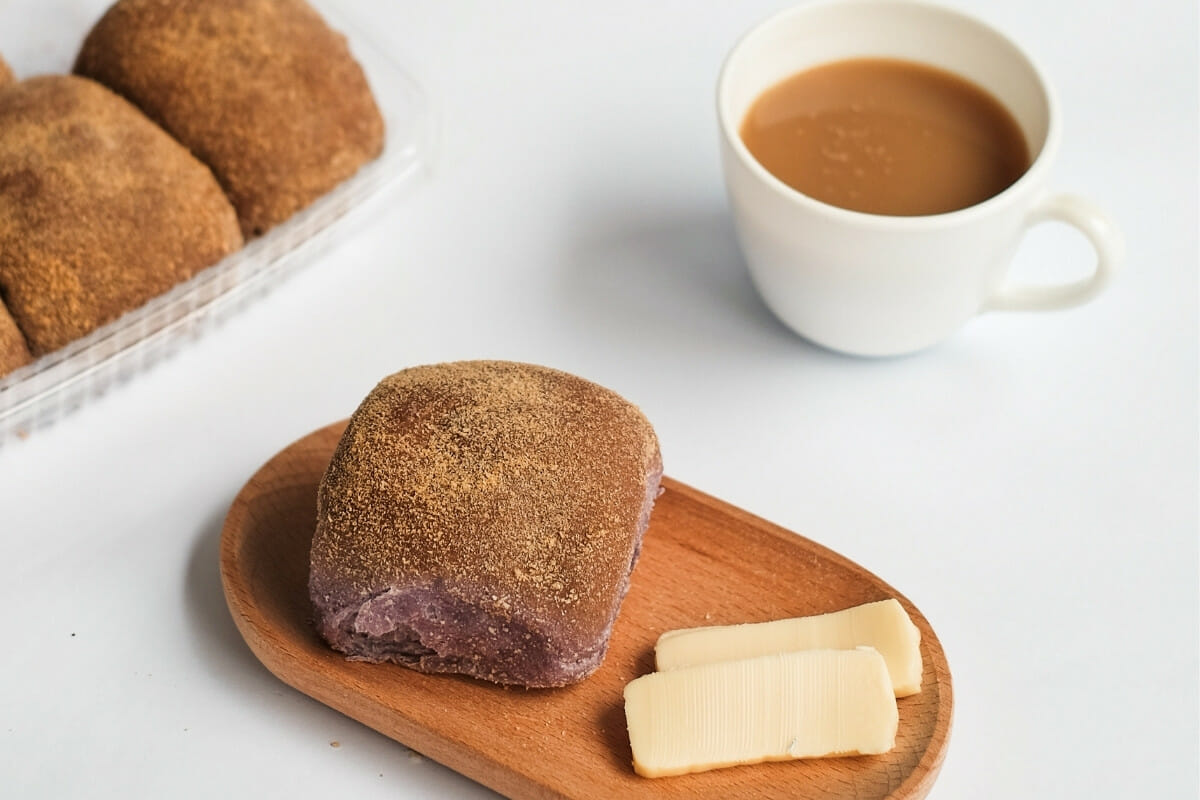
There are many instant coffee options available in variety stores called sari-sari stores. And kapeng barako, grown in Batangas, is the best choice for a strong and distinctive bitterness.
On the other hand, pandesal isn’t as salty as its name suggests (pan=bread, sal=salt in Spanish). It's actually a plain bread roll sold in local panaderias or bakeries. It tastes even better when eaten with a filling, like processed cheese slices, chocolate spread, or peanut butter. You can even stuff it with an instant version of pancit canton (noodles). Nonetheless, this fluffy, ball-shaped bread roll is still tasty even without flavorful spreads or fillings.
Safe to say, kape is the cup of tea (pun intended) of Filipinos, especially when accompanied by pieces of pandesal. For plain bread fans, it’s common to dip or even soak your pandesal in coffee. Besides breakfast, this pairing is also ideal for afternoon snacks or merienda, similar to teatime. Simple but fulfilling, indeed.
